Species Education
Learn about different hardwood flooring species available at Austin hardwood flooring.
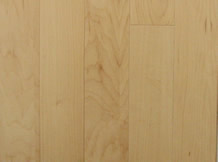
The maple hardwood is a creamy white, yellow tint with black streaks on it. The wood is normally straight-grained with birds-eye figures and swirls, lines with mixes and hues of white and yellow with dark whirly figures. There are approximately 125 maple species most of native to Asia. In the North American it grows in the Eastern U.S. next to all Lake states. It can reach a height of 145 feet. The red maple leaf is the feature of the flag of Canada. The Maple tree is planted as ornamental trees by businesses, and homeowners.
Maple flooring uses
- The Sugar Maple in North America is often known as "hard maple", also used for bowling pins, bowling alley lanes.
- It makes a great floor and is widely used in gymnasium floors, kitchen cabinets, table tops, and every other wood product you can think of like doors, handrails even kitchen wear. Up north like Wisconsin, New York, and West Virginia, the sugar maple is tapped into for its sap. This is the source of maple syrup.
The first American settlers used the maple ashes to make soap. To this day the dried wood of Maple is used for smoking of food. - This type of wood can be stained and sanded because it polishes well and is suites stains well for brown tones.
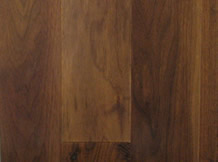
The American Walnut flooring also known as Black Walnut, Burbank Walnut, Eastern Black Walnut, Gunwood, Virginia Walnut and North American Walnut. The Black walnut flooring is a very beautiful floor due to its lustrous properties and its dark brown chocolate blends, along with its vanilla swirls.
It grows in North America south of Ontario, Canada and in the central regions of the United States like Texas, Oklahoma, Kansas and Nebraska and South Dakota. It can also be found in New York, Jersey, Pennsylvania and Minnesota.
The walnut flooring has a sort of ironic white sapwood on the outside of the tree but and the inside a chocolate brown, purple twist to it. American Black Walnut consists of variation, even though in the manufacturing process the wood floors get steamed to lessen the contrast between the sapwood and heartwood. It has a straight grain with burly patterns giving it its unique character and its texture. The janka rating of the walnut floor is 1010 so its one of the softer woods, but yet one of the most beautiful hardwoods. It is still one of the most stable wood floors.
Application of the wood are many. The Walnut flooring is perfect for radiant heating systems. Walnut flooring is very stable. This makes the floor safer than others to install in a high humid area. Although if installing a solid floor on a concrete, never hesitate to install a moisture barrier for extra protection. The wood is also used for baseboards, railings, furniture, decorative accents, picture frames and beautiful residential flooring. Because of the natural beauty, the wood requires no stain. Only in the natural form of the wood can you see the actual elegance. The walnut flooring will also develop a lustrous patina after years of use. Fort Worth Flooring Store can help with any type of walnut floors you may need.
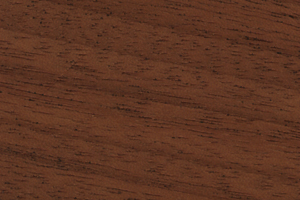
Khaya, also known as African Mahogany. Its heartwood light pink or brown but darkens upon exposure to red or brown and is an excellent choice for furniture and cabinetwork, boat-building, joinery, veneer and plywood, paneling, and shop fixtures. Khaya's heartwood is light pink or brown but darkens upon exposure to a rich red or brown. Khaya is durable with good nailing and gluing properties. It dries rapidly with little degrade and is easy to slice and peel. Janka of 830 psi

The Hickory tree known for its large nuts is native to North America. Not to be confused with other species for China and Indochina. The Hickory wood has a janka rating of 1820. The Pecan wood is the same as the Hickory. the Hickory hardwood is hard, stiff and very dense. The use of this wood can be found in alot of items used by the population. Such items are things like tool handles, bows, carts, drumsticks, golf club shafts, bottom of skis and walking sticks.
The Hickory wood is known for smoking meats and is highly prized for wood-burning stoves. The Hickory flooring is widely used in kitchens, dinning rooms and commercial buildings for its resistance and characteristics. Hickory flooring has a yellow and cream color. It also contains black swirls and knots.

Unlike American Walnut floor, the Brazilian Walnut, also known as Ipe or Canella imbuia, Embuia, Embuya Brazilian Walnut flooring is the hardest and densest hardwoods in the Brazilian hardwood family.
Like the Brazilian cherry wood, this wood is grown in Brazil, Peru, Bolivia, Venezuela, and Guatemala. But it mostly grows in the moist forests of Parana and Santa Catharine southern Brazil.
Its found in altitudes of 3,000 to 4,000 ft. The Brazilian Walnut tree grows at a maximum of 130 ft to 165 ft in height and 6 ft in diameter. This makes it one of the tallest trees of its kind.
Brazilian Walnut Floor Characteristics.
The woods color can be from an olive to chocolate brown, to gray and black reds. It usually has striping and it is fine textured with fine ripple marks. It can also come in light yellowish tans or rich mahogany blends, it just depends where it was grown. Over all it is a dark floor, mainly used for dark hardwood flooring applications.
Over time it will darken to a brown black color, originally it will display a large variation in color. It has wavy grain with a high luster. It is one of the hardest with a janka scale rating of 3680. It is resistant to wood insects and fungi. A fantastic residential or commercial floor.
Brazilian Walnut Uses.
Its used in a wide assortment of furniture, cabinet work, decorative veneer, joinery, garden furniture, hydraulic works, tool handles, bridge decking, commercial and residential flooring. Brazilian Walnut is very dense so it will cause a dulling effect with any sawing tools. Always use a carbide tip blade when cutting Brazilian Walnut. The flooring can have allot of benefits on a residential or commercial floor.
First it is one of the hardest, so scratching will not be easy. Second the wear ability due to its dense fibers can make the floor last for centuries. Its a perfect floor for a high traffic area. It is a dark floor, so it will blend in nicely with white accent furniture or trim. This floor can also make your ceilings look taller, due to its dark properties. Fort Worth Flooring Store can help with any Brazilian or American Walnut flooring.

Waterfall is a natural, if not novel, name for the kind of figure found in these sets of Bubinga. Similar to a very soft, broad and undefined quilt pattern, waterfall is aptly named. The liquidy, three dimensional texture of the wood seems full of fluid motion. The wood comes form West Africa and it is very durable. It is a very heavy wood and colors range form purplish brown to a reddish brown. It makes a beautiful wood floor and has a janka rating of 1980 psi. It has a very dense interlocking grain.

Also known as Camaru is one of the hardest wood of its kind. Brazilian Teak flooring is very durable and hard. Its botanical name is dipteryx odorata or tonka bean. Brazilian Teak grows in Brazil, Peru, Bolivia, and Costa Rica.It can reach up to 120 feet tall with a width of 5 feet. It is also know for Brazilian Chestnut, let it not be confused with the American Walnut. The Brazilian Teak or Camaru fruit is known its fragrance and is being used in the cosmetic industry and medical field today.
Its color ranges from medium brown reddish, yellow reddish, to tan brown reddish with golden streaks and black striping. It may also contain some purple brown but over the years of exposure to light it becomes a uniform yellow-brown. It has a very fine texture with interlocking grain. It has a janka rating of 3540 so it is considered one of the hardest of the Brazilian wood floors. BR111 offers one of the finest Teak from Brazil.
It has allot of other uses, besides shampoos and perfumes. It can also be found on bridges, ships, and heavy construction. It can also be found on outdoor furniture and decks. . Of coarse it is one of the most luxurious wood flooring. Some oak flooring can be stained to look like teak, but it will lack its grain characteristic. This unique grain give it the look of an intertwining dense grain you cant get from oak flooring. It performs well in residential and commercial applications. It is 175% harder than red oak and 12% more stable than red oak, the Brazilian Teak flooring is one of the most durable and resists dents and scratches and Fort Worth Flooring Store can help with any questions you may have with Brazilian Teak.

- Color of Wood :The sap is white and the heartwood is red to brown-purplish with striping.
- Photosensitivity: Color is not affected much by sunlight.
- Tree Characteristic: The actual tree grows up to 81 feet tall. The diameter is between 27 to 43 inches.
- Area Geographic :It grows in Brazil and in south Mexico it has a coarse texture with straght grain
- Luster: High to medium
- Durability : It is very resistant to decay insects and fungi and dry wood termites
- Working Character: it is not difficult to work with and finishes well. It also takes high polishes and its great with cabinetry, decorative veneeres, intruments of music and especially flooring
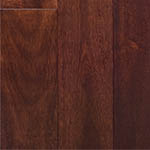
- Janka Hardness: 1,750 pounds
- Stiffness (MOE): 2,081 1001 psi
- Colors of the Heartwood is pinkish with light brown tones.
- Photosensitivity: Acacia Harwood will maintain its original color because it is not photosensitive.
- Family: Leguminosae
- Species Characteristic: The Acacia wood will grow between 21 to 51 feet in height.
- Geographic Areas: It comes from South Africa and Australia
- Texture and Grain : Uniform to fine with interlocking grain and medium luster
- Working Characteristics: The wood is used alot becuase of its ease to be cut into veneers.
- Applications: Wood Flooring.
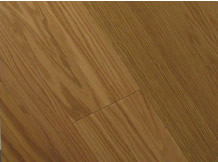
Fort Worth Flooring Store can help with any oak hardwood flooring. Unlike the American Walnut, the Red or White oak is one of the most popular wide spread wood floor in the U.S. Member or the Beech family its scientific name is Quercus rubra or Lithocarpus. Oak hardwood flooring can exist a wide variation of the name in American red oak like black oak, buck oak, canadian red oak, eastern red oak, leopard oak, maine red oak, mountain med oak, northern red oak, swamp red oak, water oak and maine red oak. Not to be confused with the American White Oak also known as Basket Oak, Chestnut Oak, Mountain Oak, Rock Oak, Tanbark Oak and Swamp Oak. It is one of the fastest growing of the oak family. It can grow up to 80 ft tall and has a diameter of 2 to 3 ft. It grows in Canada, Northeastern United States, Minnesota, Iowa, Nebraska and Kansas. It is the most common used hardwood in the United States primarily because of its abundance.
The red oak flooring has a janka rating of 1290 and can resist wear, and is less durable than white oak. Its color is mostly a reddish yellow brown. It can have black mineral streaks. This of coarse all depends on the grade of the floor.
Oak Floor Grades.
The following four grades are the standard for the NOFMA Wood Flooring Manufactures Association. Clear Grade, Select Grade, No 1 Common Oak, No 2. Common Oak Clear grade, this grade is mainly heartwood or the center of the tree. It will have a minimum number of marks, streaks or imperfections. The clear appearance give it the clear look. It may have a thin brown mineral streak 3 inches long for every 6 inches or 3/8" sapwood through the entire length of plank. Small burls and fine worm pin holes.
The Select oak grade may have different variation of natural sapwood and heartwood. Unlimited sapwood, with slight imperfections. A small tight knot every 3 feet of plank is also permitted with a little burls and small machine burns across the plank no bigger than 1/4" is also admitted.
- Common oak will contain more variation than select grade and coloration varying in characters. Filled knot holes. Minor imperfections are allowed. Flag worm holes, streaks and worm holes with dark machine burns across plank no bigger than 1/2 inch wide, no more than 2 for every 3 feet are also permitted.
- Common oak will have allot more variation in color and imperfections than No. 1 common oak. Knot holes and open splits on face that are admitted. Black streaks, with imperfections and some broken tongue are also admitted. Red oak hardwood flooring is commonly used in all applications. It makes a great commercial and residential flooring. Acquiring the 3 1/4 nail down flooring is rather easy and can be sanded and stained to practically any color. The red oak flooring is used for sand and finished because of its ability to absorb stain. It has a strong stain absorbent ability, so color can be added, changed, or manipulated with endless amount of possibilities.
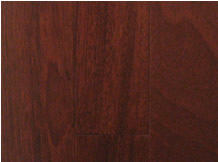
We carry Cherry from Brazil in Fort Worth Tx. Brazilian Cherry flooring also known as Jatoba or Courbaril. Its botanical name is known as Hymenaea courbaril. Unlike Brazilian Teak, the canopy tree can reach a height of 150 feet with a cylindrical trunk of up to 6 feet in diameter. The gray smooth bark exudes a gum substance so it is often used in medicinal purposes. Brazilian cherry also grows in Bolivia, Venezuela, Peru, Nicaragua, Guatemala, Caribbean and in Mexico. The Brazilian Cherry floor is considered to be an exotic floor here in the United States.
It has a brownish type of reddish color, to a pinkish to brown pink shadows. It may contain black striping and yellowish hues. It is a heavy wood with regular to irregular interlocking grain with a golden sort of glowing luster beneath its grain. At first Brazilian Cherry flooring will come in a lighter tan color but over time it darkens to its original color to the deeper reddish brown. Exposure to sunlight causes it to darken up.
Brazilian Cherry Applications
- Brazilian Cherry is 200% harder than Oak hardwood flooring and has a janka rating of about 2820. It has many applications. Brazilian cherry sometimes is used in interior finishing's like rafters, beams, door frames, furniture and flooring It also has exterior use like sleepers, frames, architectural details, furniture and many other uses such as decorative veneers, turnery and joinery. In Brazil and South America Brazilian Cherry is used in boat docks, piers and even bridges which still to this day remain standing. This is because Brazilian Cherry has a natural property that does not require added preservation due to its natural oils.
- Its one of the most popular types of flooring there is today in the market. One of these reasons is its stability, versatility, and hardness. It has allot of variation, so it matches with allot of colors complimenting furniture in any setting. Some prefer the flooring because of its unique warmth and unique reddish glowing cherry tone. Others because of its hardness, durability, stability and it is one of the most readily available flooring of its kind. This is why it is being used more in homes, apartments, condominiums and modern shopping malls. Unlike oak, maple, pine, or American Cherry and Walnut flooring, Brazilian Cherry is very durable because of its hardness. It is not easy to dent and scratch. Brazilian Cherry also comes in a hand scraped form, engineered, and solid. Some of our manufactures make Brazilian Cherry in a form that it can be floated for special applications.
- Brazilian Cherry is highly regulated through its governmental control throughout Brazil. According to Ibama, Brazil's government harvesting control agency, no clear cutting is allowed in Brazil. All trees must be tagged and presented to authorities before harvesting to ensure proper and responsible harvesting regulations were practiced. No tree less than 26 inches in diameter when measured 48 inches above ground can be cut. This ensures availability and no under age cutting. With immediate jail with out bail until trial held, and fines up to $1,000,000 companies in Brazil take no chances in these tight government regulations. Not to mention emidiate seizure of equipment, bank accounts and other properties. It is safe to say Brazil has one of the most strictest environmental laws and enforcement in the world. Fort Worth Flooring Store is ready to help you with any questions you may have.
Featured In


Ready to get started?
Schedule your Free In-home estimate
Flooring for Business
Full-Service Commercial Flooring Solutions
We serve businesses of all sizes from corporate and healthcare facilities, to small businesses, and property management groups.
Contact Us
